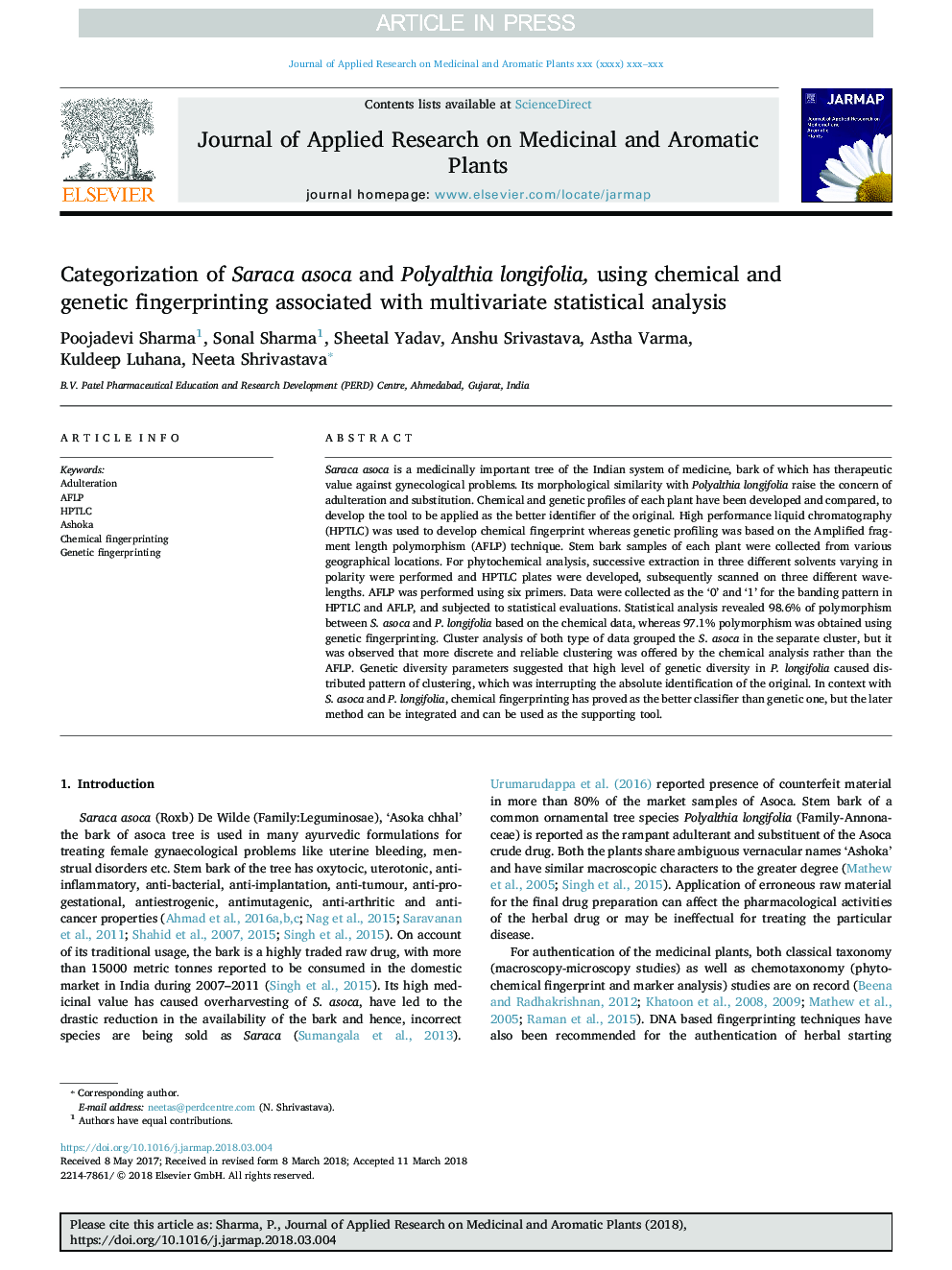| کد مقاله | کد نشریه | سال انتشار | مقاله انگلیسی | نسخه تمام متن |
|---|---|---|---|---|
| 8692679 | 1581555 | 2018 | 6 صفحه PDF | دانلود رایگان |
عنوان انگلیسی مقاله ISI
Categorization of Saraca asoca and Polyalthia longifolia, using chemical and genetic fingerprinting associated with multivariate statistical analysis
دانلود مقاله + سفارش ترجمه
دانلود مقاله ISI انگلیسی
رایگان برای ایرانیان
کلمات کلیدی
موضوعات مرتبط
علوم زیستی و بیوفناوری
علوم کشاورزی و بیولوژیک
علوم کشاورزی و بیولوژیک (عمومی)
پیش نمایش صفحه اول مقاله

چکیده انگلیسی
Saraca asoca is a medicinally important tree of the Indian system of medicine, bark of which has therapeutic value against gynecological problems. Its morphological similarity with Polyalthia longifolia raise the concern of adulteration and substitution. Chemical and genetic profiles of each plant have been developed and compared, to develop the tool to be applied as the better identifier of the original. High performance liquid chromatography (HPTLC) was used to develop chemical fingerprint whereas genetic profiling was based on the Amplified fragment length polymorphism (AFLP) technique. Stem bark samples of each plant were collected from various geographical locations. For phytochemical analysis, successive extraction in three different solvents varying in polarity were performed and HPTLC plates were developed, subsequently scanned on three different wavelengths. AFLP was performed using six primers. Data were collected as the '0' and '1' for the banding pattern in HPTLC and AFLP, and subjected to statistical evaluations. Statistical analysis revealed 98.6% of polymorphism between S. asoca and P. longifolia based on the chemical data, whereas 97.1% polymorphism was obtained using genetic fingerprinting. Cluster analysis of both type of data grouped the S. asoca in the separate cluster, but it was observed that more discrete and reliable clustering was offered by the chemical analysis rather than the AFLP. Genetic diversity parameters suggested that high level of genetic diversity in P. longifolia caused distributed pattern of clustering, which was interrupting the absolute identification of the original. In context with S. asoca and P. longifolia, chemical fingerprinting has proved as the better classifier than genetic one, but the later method can be integrated and can be used as the supporting tool.
ناشر
Database: Elsevier - ScienceDirect (ساینس دایرکت)
Journal: Journal of Applied Research on Medicinal and Aromatic Plants - Volume 9, May 2018, Pages 91-96
Journal: Journal of Applied Research on Medicinal and Aromatic Plants - Volume 9, May 2018, Pages 91-96
نویسندگان
Poojadevi Sharma, Sonal Sharma, Sheetal Yadav, Anshu Srivastava, Astha Varma, Kuldeep Luhana, Neeta Shrivastava,